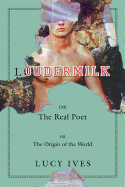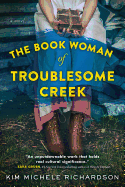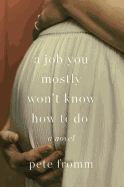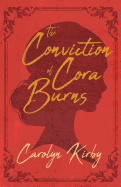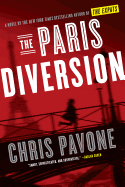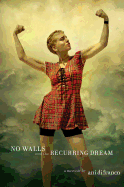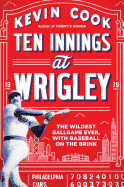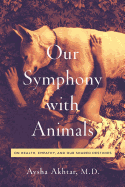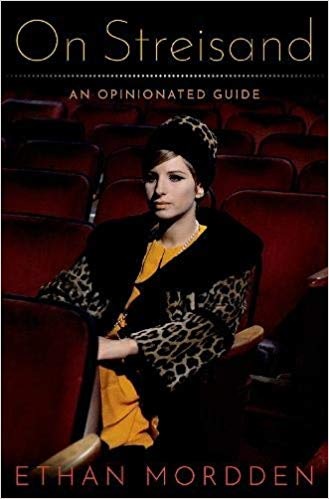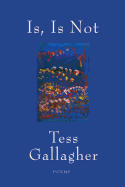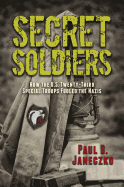The joy in giving and the joy in pregnancy; caring for a child and introducing them to your traditions; the sacrifices made and the relationships built... All of these books feature loving, strong--sometimes unusual--relationships between children and their mothers and grandmothers, perfect for a Mother's Day-weekend read.
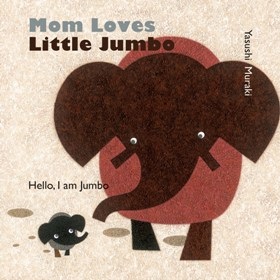 In Yasushi Muraki's board book, Mom Loves Little Jumbo (minedition, $9.99), Little Jumbo the elephant tells readers ages 3 to 5 all about Mom. The tiny, gray elephant stands next to his mother, her shadow stretching from the left-hand page to the right: "Mom is big. I am small." Mom protects and cares for Little Jumbo in a number of ways: keeping him dry during a rainstorm, catching him when he falls, playing hide-and-seek with him.... Most important, though, "my mom loves me," Little Jumbo states on the last page, as the two walk off together, "and I love my Mom."
In Yasushi Muraki's board book, Mom Loves Little Jumbo (minedition, $9.99), Little Jumbo the elephant tells readers ages 3 to 5 all about Mom. The tiny, gray elephant stands next to his mother, her shadow stretching from the left-hand page to the right: "Mom is big. I am small." Mom protects and cares for Little Jumbo in a number of ways: keeping him dry during a rainstorm, catching him when he falls, playing hide-and-seek with him.... Most important, though, "my mom loves me," Little Jumbo states on the last page, as the two walk off together, "and I love my Mom."
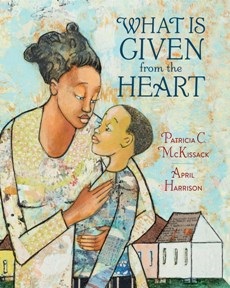 The late Patricia McKissack joins celebrated folk artist and illustrator April Harrison to capture the joy of giving in their picture book, What Is Given from the Heart (Schwartz & Wade, $17.99, ages 4-8). After his father's death, James Otis and his mother lose their farm and move to the Bottoms. There, the African American family of two try to rebuild their lives. After a "skimpy" Christmas and new year, Valentine's Day approaches and their pastor implores his congregation to donate items for "love boxes" that will go to needy families, reminding them that "what is given from the heart reaches the heart." Though they don't have much, James Otis and his mother embrace the opportunity to create gifts for another struggling family of two and are pleasantly surprised at how giving from the heart can quickly circle back. What Is Given from the Heart is a loving tribute to collective work, responsibility and the joy that comes from giving freely.
The late Patricia McKissack joins celebrated folk artist and illustrator April Harrison to capture the joy of giving in their picture book, What Is Given from the Heart (Schwartz & Wade, $17.99, ages 4-8). After his father's death, James Otis and his mother lose their farm and move to the Bottoms. There, the African American family of two try to rebuild their lives. After a "skimpy" Christmas and new year, Valentine's Day approaches and their pastor implores his congregation to donate items for "love boxes" that will go to needy families, reminding them that "what is given from the heart reaches the heart." Though they don't have much, James Otis and his mother embrace the opportunity to create gifts for another struggling family of two and are pleasantly surprised at how giving from the heart can quickly circle back. What Is Given from the Heart is a loving tribute to collective work, responsibility and the joy that comes from giving freely.
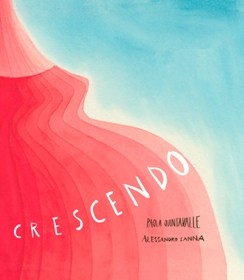 Crescendo by Paola Quintavalle, illustrated by Alessandro Sanna (Enchanted Lion, $19.95), takes readers ages 4 and up through human gestation. Each week (from fifth to 40th) is honored in a two-page spread featuring Quintavalle's carefully chosen text and a facing illustration. Is there a picture book that better marries art and science? Sanna seems to be working in watercolor with a brush dipped in celestial light, and yet Crescendo is deeply scientific. Quintavalle has loaded her pen not with sunshine and moonglow but with information about human gestation; her narrative, utterly faithful to the stages of embryotic and fetal growth, concludes with "Developmental Facts That Inspired the Text." Crescendo is a book that belongs on multiple shelves in the kids' section of a bookstore or library, but the truth is, it wouldn't be out of place in an adult's collection.
Crescendo by Paola Quintavalle, illustrated by Alessandro Sanna (Enchanted Lion, $19.95), takes readers ages 4 and up through human gestation. Each week (from fifth to 40th) is honored in a two-page spread featuring Quintavalle's carefully chosen text and a facing illustration. Is there a picture book that better marries art and science? Sanna seems to be working in watercolor with a brush dipped in celestial light, and yet Crescendo is deeply scientific. Quintavalle has loaded her pen not with sunshine and moonglow but with information about human gestation; her narrative, utterly faithful to the stages of embryotic and fetal growth, concludes with "Developmental Facts That Inspired the Text." Crescendo is a book that belongs on multiple shelves in the kids' section of a bookstore or library, but the truth is, it wouldn't be out of place in an adult's collection.
 When Maya says that she wants to see her grandma, Mother explains "Grandma lives many thousands of miles away." But, a few weeks later, while walking home from school, Mother says she has a surprise for Maya: Grandma! Maya learns right away that Grandma does things differently. She wears a "crimson sari" and offers "homemade sweets." The next morning, instead of taking the exciting trip Father had promised to an island with a carousel, Mother says the family will pray at a temple for Holi. Maya "wish[es] Grandma had never come." Saumiya Balasubramaniam takes a tender look at the complexity of family bonds--especially when they span oceans and generations--in When I Found Grandma, illustrated by Qin Leng (Groundwood Books, $17.95, ages 4-7). Maya's initial unhappiness gives way to acceptance and love; her struggles with cultural differences are convincingly stated, and reinforced perfectly by Leng's lively ink-and-watercolor illustrations. Maya's and Grandma's compromises are satisfying and, by the end, Maya didn't just find Grandma, they "found each other."
When Maya says that she wants to see her grandma, Mother explains "Grandma lives many thousands of miles away." But, a few weeks later, while walking home from school, Mother says she has a surprise for Maya: Grandma! Maya learns right away that Grandma does things differently. She wears a "crimson sari" and offers "homemade sweets." The next morning, instead of taking the exciting trip Father had promised to an island with a carousel, Mother says the family will pray at a temple for Holi. Maya "wish[es] Grandma had never come." Saumiya Balasubramaniam takes a tender look at the complexity of family bonds--especially when they span oceans and generations--in When I Found Grandma, illustrated by Qin Leng (Groundwood Books, $17.95, ages 4-7). Maya's initial unhappiness gives way to acceptance and love; her struggles with cultural differences are convincingly stated, and reinforced perfectly by Leng's lively ink-and-watercolor illustrations. Maya's and Grandma's compromises are satisfying and, by the end, Maya didn't just find Grandma, they "found each other."
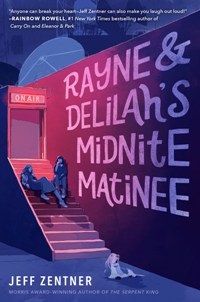 Delia, whose father left when she was young, knows that she's unlikely ever to roam far from Jackson, Tenn.: even with three jobs between the two of them, she and her mom (with whom she has a close relationship) make just enough to squeak by. Delia plans to go to community college and keep filming her cable access TV program, Midnite Matinee, with best friend Josie, who has dreamed of working in TV since she "was old enough to remember." Even though she doesn't love the terrible scary movies that Delia adores, Josie enjoys playing Rayne Ravenscroft to Delia's Delilah Darkwood on their Elvira-style show. When the girls are invited to a horror convention, Delia becomes convinced she can talk someone into producing Midnite Matinee. The girls set off on a road trip that could make or break the show--and their friendship, too. Rayne & Delilah's Midnite Matinee (Crown, $17.99, 12-up) is a change for Jeff Zentner, whose earlier works featured teens in significantly more tragic situations. Throughout, Zentner keeps the spotlight firmly planted on his two female protagonists, creating a novel as funny as it is bittersweet.
Delia, whose father left when she was young, knows that she's unlikely ever to roam far from Jackson, Tenn.: even with three jobs between the two of them, she and her mom (with whom she has a close relationship) make just enough to squeak by. Delia plans to go to community college and keep filming her cable access TV program, Midnite Matinee, with best friend Josie, who has dreamed of working in TV since she "was old enough to remember." Even though she doesn't love the terrible scary movies that Delia adores, Josie enjoys playing Rayne Ravenscroft to Delia's Delilah Darkwood on their Elvira-style show. When the girls are invited to a horror convention, Delia becomes convinced she can talk someone into producing Midnite Matinee. The girls set off on a road trip that could make or break the show--and their friendship, too. Rayne & Delilah's Midnite Matinee (Crown, $17.99, 12-up) is a change for Jeff Zentner, whose earlier works featured teens in significantly more tragic situations. Throughout, Zentner keeps the spotlight firmly planted on his two female protagonists, creating a novel as funny as it is bittersweet.
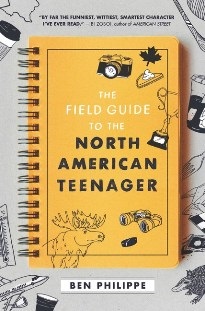 In Ben Philippe's The Field Guide to the North American Teenager (Balzer + Bray, $18.99, ages 13-up), Norris Kaplan is about to start his junior year at a new school in Austin, Tex., where his Haitian/Canadian mother recently got a job. Generally pessimistic and especially sour about moving to "the surface of the sun," Norris is determined to hate everything. Which he does. Until Aarti Puri. "Dark skinned... with... artificially dyed dark red hair," Aarti is artistic, smart and not into him. But Norris makes a deal with cheerleader Madison when applying for a job at her family's restaurant: he'll cover shifts when she has practice and she'll help him with Aarti. Slowly, with Maddie's help, Norris starts hanging with cheerleaders, makes friends with a nice loner and goes on dates with Aarti. All the while, Norris writes in his journal witty, self-satisfied "field guide" entries disparaging life in Austin and the people around him. That type of mindset can backfire, though, and, when it does, Norris might have to leave Texas altogether. --Siân Gaetano, children's and YA editor, Shelf Awareness
In Ben Philippe's The Field Guide to the North American Teenager (Balzer + Bray, $18.99, ages 13-up), Norris Kaplan is about to start his junior year at a new school in Austin, Tex., where his Haitian/Canadian mother recently got a job. Generally pessimistic and especially sour about moving to "the surface of the sun," Norris is determined to hate everything. Which he does. Until Aarti Puri. "Dark skinned... with... artificially dyed dark red hair," Aarti is artistic, smart and not into him. But Norris makes a deal with cheerleader Madison when applying for a job at her family's restaurant: he'll cover shifts when she has practice and she'll help him with Aarti. Slowly, with Maddie's help, Norris starts hanging with cheerleaders, makes friends with a nice loner and goes on dates with Aarti. All the while, Norris writes in his journal witty, self-satisfied "field guide" entries disparaging life in Austin and the people around him. That type of mindset can backfire, though, and, when it does, Norris might have to leave Texas altogether. --Siân Gaetano, children's and YA editor, Shelf Awareness
 Cathy Guisewite created a beloved cartoon strip, "Cathy," that was syndicated for 34 years. I vividly remember some of them adorning office corkboards of mine. Many women saw themselves in "Cathy," as she dealt with weight, hair, career and parents. Now Guisewite has written Fifty Things That Aren't My Fault: Essays from the Grown-up Years (Putnam, $27), with the same humor, heart and compassion she showed in her strip.
Cathy Guisewite created a beloved cartoon strip, "Cathy," that was syndicated for 34 years. I vividly remember some of them adorning office corkboards of mine. Many women saw themselves in "Cathy," as she dealt with weight, hair, career and parents. Now Guisewite has written Fifty Things That Aren't My Fault: Essays from the Grown-up Years (Putnam, $27), with the same humor, heart and compassion she showed in her strip.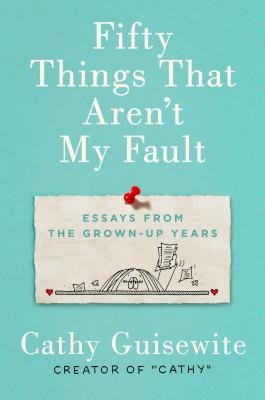 Guisewite riffs on the joys of going to the mall for camaraderie and possibility, while hoping finally to find a top to match the perfect skirt she's had for 11 years; she wonders what it would be like to be male and not worry about work make-up, date make-up, break-up make-up. No make-up.
Guisewite riffs on the joys of going to the mall for camaraderie and possibility, while hoping finally to find a top to match the perfect skirt she's had for 11 years; she wonders what it would be like to be male and not worry about work make-up, date make-up, break-up make-up. No make-up.


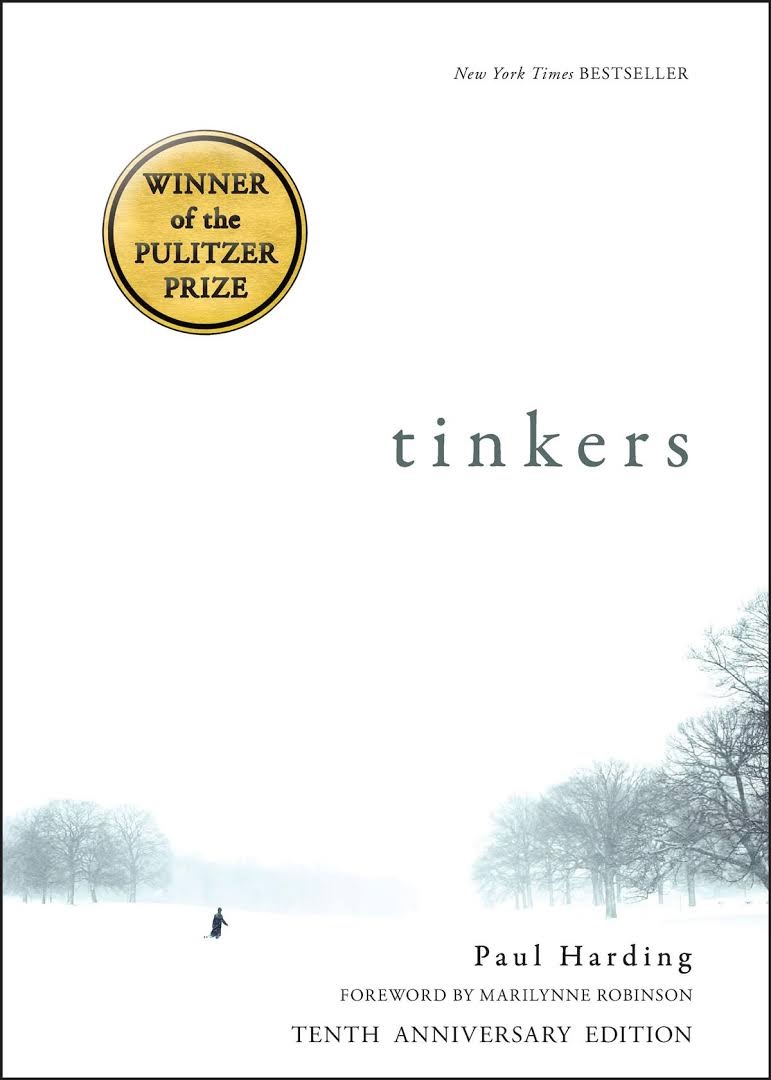 This year marks the 10th anniversary of Paul Harding's Tinkers, which was the surprise recipient of the the 2010 Pulitzer Prize for Fiction. (Later, the New York Times admitted that it had passed on reviewing Tinkers on its initial publication.) Publisher Bellevue Literary Press, founded in 2007, enjoyed a serious reputation boost. Bellevue was the first small press to win a Pulitzer for Fiction since Louisiana State University Press won for John Kennedy Toole's A Confederacy of Dunces in 1981.
This year marks the 10th anniversary of Paul Harding's Tinkers, which was the surprise recipient of the the 2010 Pulitzer Prize for Fiction. (Later, the New York Times admitted that it had passed on reviewing Tinkers on its initial publication.) Publisher Bellevue Literary Press, founded in 2007, enjoyed a serious reputation boost. Bellevue was the first small press to win a Pulitzer for Fiction since Louisiana State University Press won for John Kennedy Toole's A Confederacy of Dunces in 1981. In Yasushi Muraki's board book, Mom Loves Little Jumbo (minedition, $9.99), Little Jumbo the elephant tells readers ages 3 to 5 all about Mom. The tiny, gray elephant stands next to his mother, her shadow stretching from the left-hand page to the right: "Mom is big. I am small." Mom protects and cares for Little Jumbo in a number of ways: keeping him dry during a rainstorm, catching him when he falls, playing hide-and-seek with him.... Most important, though, "my mom loves me," Little Jumbo states on the last page, as the two walk off together, "and I love my Mom."
In Yasushi Muraki's board book, Mom Loves Little Jumbo (minedition, $9.99), Little Jumbo the elephant tells readers ages 3 to 5 all about Mom. The tiny, gray elephant stands next to his mother, her shadow stretching from the left-hand page to the right: "Mom is big. I am small." Mom protects and cares for Little Jumbo in a number of ways: keeping him dry during a rainstorm, catching him when he falls, playing hide-and-seek with him.... Most important, though, "my mom loves me," Little Jumbo states on the last page, as the two walk off together, "and I love my Mom." The late Patricia McKissack joins celebrated folk artist and illustrator April Harrison to capture the joy of giving in their picture book,
The late Patricia McKissack joins celebrated folk artist and illustrator April Harrison to capture the joy of giving in their picture book, 
 When Maya says that she wants to see her grandma, Mother explains "Grandma lives many thousands of miles away." But, a few weeks later, while walking home from school, Mother says she has a surprise for Maya: Grandma! Maya learns right away that Grandma does things differently. She wears a "crimson sari" and offers "homemade sweets." The next morning, instead of taking the exciting trip Father had promised to an island with a carousel, Mother says the family will pray at a temple for Holi. Maya "wish[es] Grandma had never come." Saumiya Balasubramaniam takes a tender look at the complexity of family bonds--especially when they span oceans and generations--in
When Maya says that she wants to see her grandma, Mother explains "Grandma lives many thousands of miles away." But, a few weeks later, while walking home from school, Mother says she has a surprise for Maya: Grandma! Maya learns right away that Grandma does things differently. She wears a "crimson sari" and offers "homemade sweets." The next morning, instead of taking the exciting trip Father had promised to an island with a carousel, Mother says the family will pray at a temple for Holi. Maya "wish[es] Grandma had never come." Saumiya Balasubramaniam takes a tender look at the complexity of family bonds--especially when they span oceans and generations--in  Delia, whose father left when she was young, knows that she's unlikely ever to roam far from Jackson, Tenn.: even with three jobs between the two of them, she and her mom (with whom she has a close relationship) make just enough to squeak by. Delia plans to go to community college and keep filming her cable access TV program, Midnite Matinee, with best friend Josie, who has dreamed of working in TV since she "was old enough to remember." Even though she doesn't love the terrible scary movies that Delia adores, Josie enjoys playing Rayne Ravenscroft to Delia's Delilah Darkwood on their Elvira-style show. When the girls are invited to a horror convention, Delia becomes convinced she can talk someone into producing Midnite Matinee. The girls set off on a road trip that could make or break the show--and their friendship, too.
Delia, whose father left when she was young, knows that she's unlikely ever to roam far from Jackson, Tenn.: even with three jobs between the two of them, she and her mom (with whom she has a close relationship) make just enough to squeak by. Delia plans to go to community college and keep filming her cable access TV program, Midnite Matinee, with best friend Josie, who has dreamed of working in TV since she "was old enough to remember." Even though she doesn't love the terrible scary movies that Delia adores, Josie enjoys playing Rayne Ravenscroft to Delia's Delilah Darkwood on their Elvira-style show. When the girls are invited to a horror convention, Delia becomes convinced she can talk someone into producing Midnite Matinee. The girls set off on a road trip that could make or break the show--and their friendship, too.  In Ben Philippe's
In Ben Philippe's 